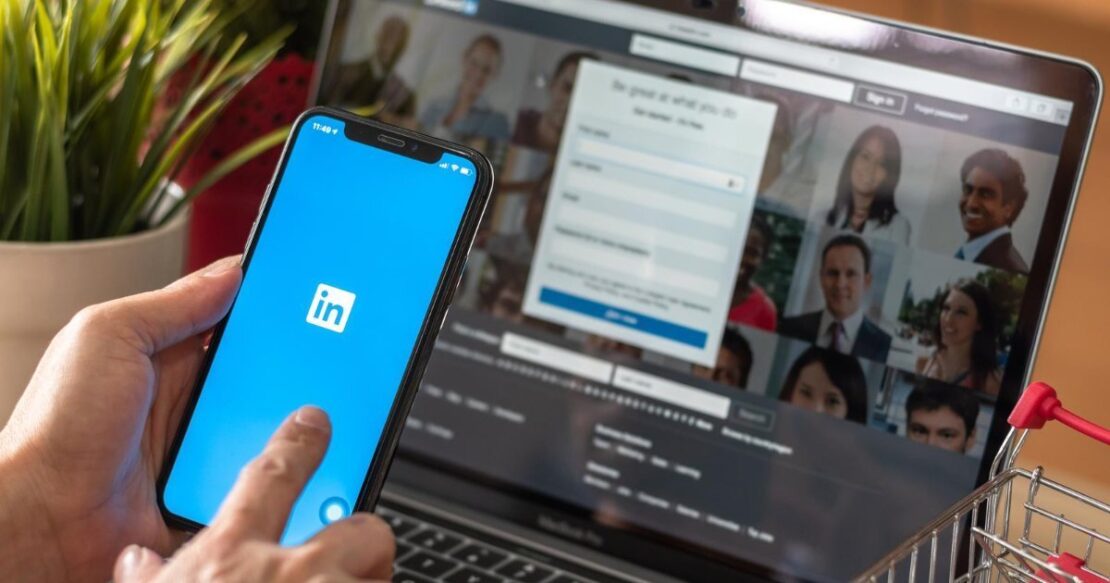LinkedIn Ads: Are They Right for Your Business?

It’s too expensive. It doesn’t work. LinkedIn doesn’t reward or penalize advertisers based on ad quality. When you Google reviews of LinkedIn ads, you’ll get a litany of reasons why advertisers shouldn’t be using them. Before you let those reasons turn you off, however, do your research and decide whether or not LinkedIn ads are right for your business.
Is Advertising on LinkedIn Effective?
The answer to this question has various components and involves addressing other questions. The first of which is, what type of businesses should be on LinkedIn?
If an advertiser is complaining about LinkedIn ads, there’s a very real possibility that he or she is not in a vertical that can benefit from the platform. For one, LinkedIn ads are expensive. Clicks are costly, averaging between $6 and $8.
Taking that into consideration, there are numerous businesses for which the ROI of LinkedIn ads would either be minimal or flat out regressive. Some such businesses include B2C companies, ad agencies, E-commerce, those with broad targets and those with smaller deal sizes ($10K or less).
Two, LinkedIn attracts a very specific audience. On LinkedIn, you’ll find job seekers, recruiters, established CEOs, “middle” businesspeople and entrepreneurs. You likely won’t find working-class individuals unless, of course, they’re looking to trade out their old position for a new one.
Finally, LinkedIn is for targeted ads. For instance, you can show your ad only to those with “CEO” in their title and who operate “aerospace manufacturing firms.” Advertises with too broad of a target audience (“CEOs” or “manufacturers”), may be better served by using a platform that will allow them to reach more of a segment at a lower cost-per-click.
So, what type of businesses yield the most return on their LinkedIn ad investments? The three verticals that tend to benefit the most from this unique platform include the following:
- B2B businesses with high-value products or services
- Recruiters
- Those with very specific audiences
For businesses that confidently say they fall into one or more of those verticals should give LinkedIn advertising an honest effort.
Why LinkedIn Ads Fail
Say you were discussing the effectiveness of LinkedIn ads with the advertiser of a niche business that sells high-value manufacturing equipment. He or she reassured you that LinkedIn ads are, in fact, a waste of time, money and effort. Before you take his or her word for it, consider the fact that there is a very real possibility he or she went about the campaign in the wrong way.
There are three main reasons LinkedIn advertising campaigns fail. If you hope to achieve success on this platform, it’s important that you first understand those reasons so you can avoid them:
Failure to understand LinkedIn’s content and user intent
LinkedIn’s purpose is to “connect the world’s professionals to make them more successful and productive. Whereas individuals turn to Google to research a product they intend to purchase, they use LinkedIn to make professional connections and converse with existing ones. For this reason, pushing solutions and products in the traditional way simply will not work.
Failing to track and test
Because the success of LinkedIn ads lies in targeting, businesses need to get their campaigns just right to yield the highest return. To do this, they need to develop several ads within a single campaign and track and test the results of each. Once they pinpoint the ads that drive the most conversions, they can focus more of their budget towards those ads to drive more leads at a lower cost-per-click.
Managing minimum bids
It’s true that the cost of clicks on LinkedIn is far more than those on other sites such as Google, Facebook or Twitter. To keep costs low, advertisers try to keep bids at the lowest amount possible, which is $2. Even for businesses in niche markets, $2 bids are unlikely to get entered into very many auctions, therefore leaving the ads unseen.
How To Use LinkedIn Advertising To the Greatest Effect
So, now that you know what not to do to ensure your LinkedIn ads are a success, it’s time to discuss what you should be doing.
Develop a Buyer Persona
As we may have mentioned one or two times already, the magic of LinkedIn ads lies in the targeting. Before you even think about the creative aspects of your ad, use real data and informed speculation to develop a list of the key characteristics of your target audience. Your list should include details regarding everything from the persona’s role and company to his or her hobbies, educational background and mannerisms.
Decide What Type of Ad You Want To Use
LinkedIn offers you the ability to use one of two types of ads per campaign: Sponsored Content Ads and Text Ads. Sponsored Content Ads appear directly in your audience’s news feed and therefore appear more organic, whereas Text Ads appear on multiple LinkedIn pages, thereby extending your reach. You also have the option of using a horizontal, square, tall or long ad.
Optimize Your Ad
Once you’ve created several ads to test, track them and optimize them over the long-term. Use split-testing to conduct a side-by-side comparison of how each ad performs. Don’t forget to split test your conversion process as well, as an ad may be effective in generating leads, but your conversion process may turn them away.
LinkedIn ads have enormous potential for the right businesses. If you feel like your business can benefit from advertising on this platform, work with a digital marketing company that has experience with LinkedIn ads and that can help position you directly in front of your target market. Contact Momentum to discuss our digital marketing capabilities today.